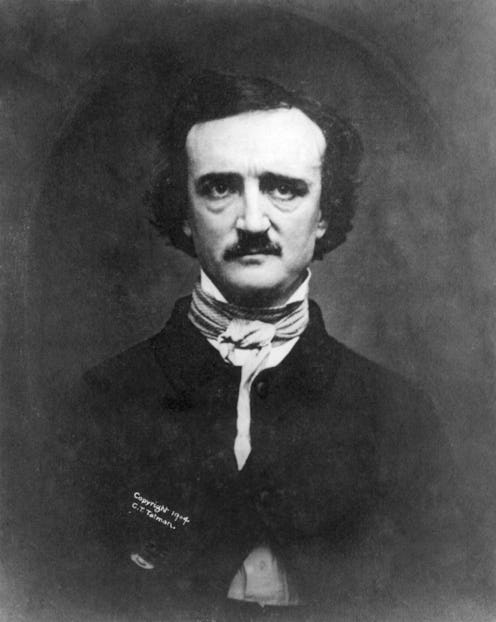
Here's a fun fact to impress your book nerd friends: Charles Dickens' pet raven inspired Edgar Allan Poe to write his most famous poem. "The Raven" turns out to have been an actual, living creature, although the real bird was somewhat less foreboding than its namesake. Having been featured previously in his owner's novel, Dickens' pet raven, Grip, might just be the most literary bird of all time.
Dickens wrote Grip into his 1841 novel, Barnaby Rudge, where his pet featured as a talkative companion to the title character. Already a fan of his fellow writer, Poe reviewed the first few chapters of the novel for Graham's Magazine, and was delighted with the avian character, whom he found to be "intensely amusing." When he learned that Dickens was planning a family trip to the U.S. the following year, Poe wrote to him to request a meeting, which Dickens was "very glad" to agree to.
Grip came to the U.S. along with his master, and Poe was surprised to learn that the character he had admired had a basis in reality. Dickens' pet raven was just as talkative and disagreeable as his Barnaby Rudge namesake, to the extent that his behavior had exiled him to the family's carriage house.
Poe published "The Raven" in 1845. The connection between his talking bird and Dickens' did not go over his critics' heads. Atlas Obscura notes that "Poe was taunted with the refrain 'Here comes Poe with his Raven, like Barnaby Rudge, / Three fifths of him genius, two fifths sheer fudge.'" The heckling was not entirely uncalled for; the Grip of Barnaby Rudge was known for "tapping at the door," among other quirks that later appeared in Poe's poem.
"The Raven" turned out to be Poe's most successful work. Unfortunately, the troubled writer died four years later, under mysterious circumstances. He is buried in Baltimore at Westminster Hall and Burial Ground.
After his pet died, Dickens had Grip taxidermied. The stuffed bird is on display in the Free Library of Philadelphia's Rare Book Department.
Image: Wikimedia Commons